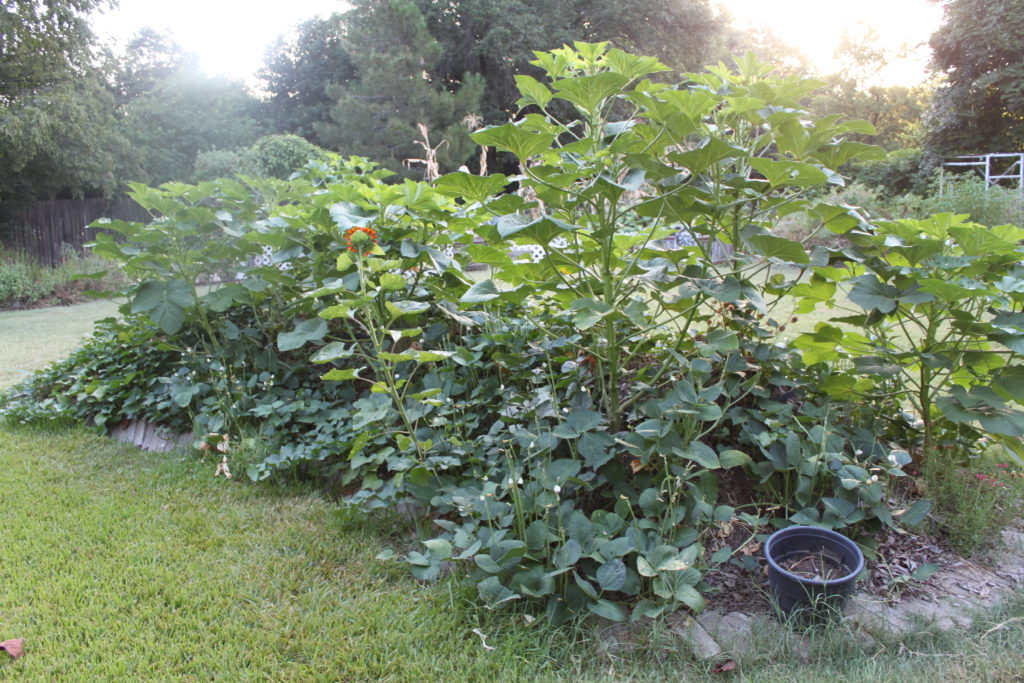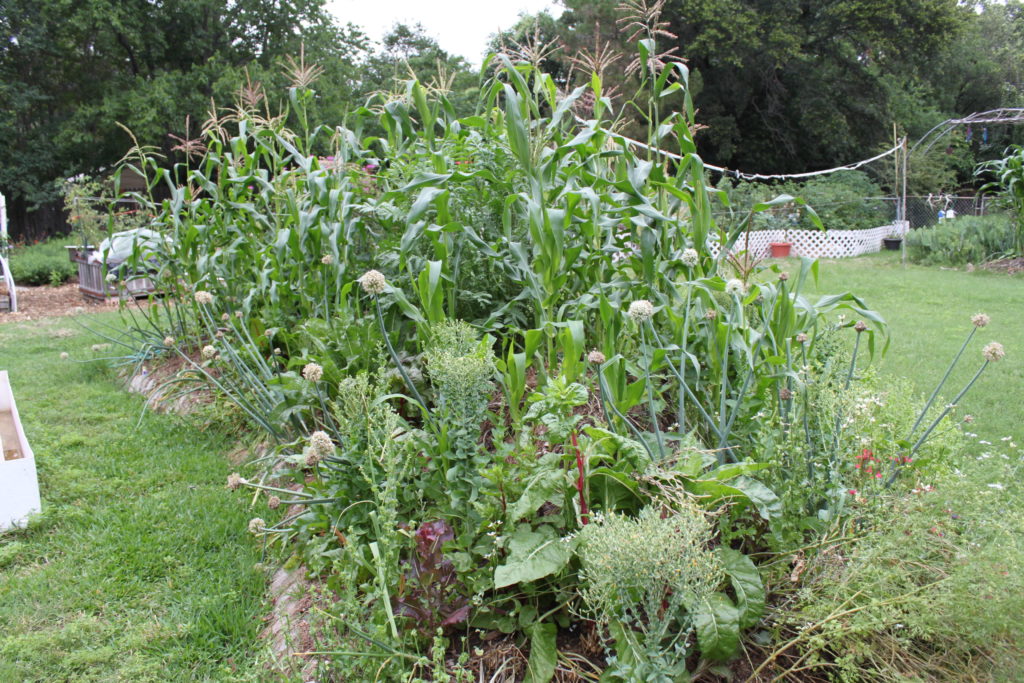Should you experiment with hugelkultur in your garden?
Most gardeners are accustomed to using a single method of gardening, maybe a plot or a raised bed. There are so many different gardening methods around the world, though, and some of them may help you grow better where you are.

One such method is
To make a hugel bed, dig a trench about 1 foot deep, and add woody debris of decreasing size — rotting logs or trunks make a good base, followed by branches and then twigs. Top the pile with compostable material, including wood chips, newspaper, leaves and grass clippings. Cover with the soil you removed to make the trench, and immediately plant cover crop or a diverse array of vegetables into the mound.
“When the bed is newly constructed, it’s like a fresh palette,” said Brigid Corbett, a master gardener in Denton County, Texas. “There’s nothing on there, just that soil, and seeds start very, very well in that.”
Corbett, a master gardener in Denton County, Texas, has been experimenting with hugelkultur in her own garden since 2014. Though she said that there is not a lot of formal research conducted on hugelkultur, she has observed a number of benefits and best practices from her own garden.

Hugelkultur beds are exceptional at providing moisture to plants throughout the growing season. The gradual decay of wood is a consistent source of long-term nutrients and moisture for the plants, and the composting wood generates heat which can extend the growing season. Corbett cited research conducted in arid China where hugelkultur was found to be the most effective method for keeping crops moist.
“As the wood inside rots it provides food for the garden in the soil that you planted above it,” explained Joe Masabni, extension small-acreage vegetable specialist at Texas A&M AgriLife Research & Extension Center at Overton. “All that rotting wood holds moisture longer.”
The vertical nature of the hugelkultur mounds helps maximize the efficiency of space in the garden. Corbett said that hugelkultur beds also provide “microclimates” for gardening.
“Most of my beds are oriented north south,” Corbett said. “On north sides, more success with plants that need a little more shade. On the south end, I have stuff that can tolerate the soil and more sun.”
Preparing a hugelkultur mound takes some effort, but once it is prepared, it requires less maintenance than traditional garden beds.
“The initial preparation is a lot, but once it’s done it’s just plant and fertilize and forget,” Masabni said. “Once the mound is mature, there is little effort in soil preparation. You don’t have to till, you don’t have to add compost. Just harvest and plant something else instead.”
Masabni said it takes about a year for the hugelkultur mound to “settle” that requires regular watering, but after that period, the wood is a rich source of nutrition for the plants grown on it. Corbett has hugelkultur mounds that have lasted five years before they have flattened to ground-level.
Structural integrity is key to successful hugelkultur mound.
“A lot of people forget to plant it immediately after they build it and then the first rainfall most of that soil washes out,” Masabni said. “I recommend when you build it and plant it immediately, even if you have to grow something that will grow fast and make a thick cover and bind it all together.”
The method of harvesting also impacts the structure of the hugelkultur mounds.
“Never pull the whole plant with the roots and all,” Masabni said. “Cut it and leave the roots in there to rot. All the roots are more nutrition and bind the soil together.”
The exception is weeds, which should be pulled up from the roots, but Corbett said weeds can also be left, roots up, on the mound to decompose as mulch. In general, there should always be plants in the hugelkultur mound.
“The trick is not ever have bare soil, so either have plants that cover the bed’s surface or mulch,” Corbett said.
Plant diversity also helps keep the mound together.

“Stay away from monoculture,” Corbett said. “You don’t want to plant the whole bed as one thing, you want to have a diversity of plants in the bed.”
Most plants thrive in hugelkultur beds, except fruit trees, which Corbett said may suffer from the structural uncertainty of settling beds and have been shown to affect the mounds’ water availability over time. Corbett has had good luck with blackberries and salvia greggii shrubs, but would not recommend anything larger in the bed.
If you are looking to keep plants healthily hydrated and save a little space, hugelkultur might be an experiment worth trying on your farm or homestead.
“It is a nice sustainable idea and great for gardeners who are lazy because once you prepare it and really all you have to do is stick the plants in there and leave it,” Masabni said.

This is our first year with ours finished, and attempting to grow in it. We threw out dandelion, peas, borage, and turtle beans to start adding nitrogen and improve our top layer of compost. I planted spinach and onions on the top as an experiment. Everything turned yellow, so I know the wood is still sucking up all the nitrogen. Nothing has done well so far, including the peas and beans, but it is the first year. I’m hoping to do another fall crop of peas to add even more nitrogen before we can add a layer of leaves to the top. Hopefully next year it will be more broken-down and the decaying wood will start releasing that nitrogen back. Can’t wait!